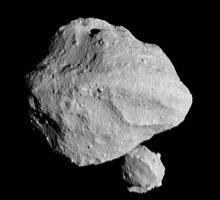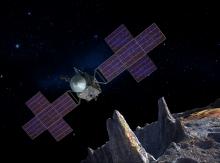Listen to today's episode of StarDate on the web the same day it airs in high-quality streaming audio without any extra ads or announcements. Choose a $8 one-month pass, or listen every day for a year for just $30.
You are here
Passing By
A space rock as long as a football field or bigger will glide past Earth tonight. 2019 XS will pass about 350,000 miles away — half-again the distance between Earth and the Moon.
Such encounters happen all the time. This one was forecast well in advance because the asteroid was discovered several years ago. Astronomers have observed it many times since then, allowing them to plot its orbit well into the future. But many visiting asteroids aren’t discovered until they’re right on top of us — usually because they’re quite small.
Astronomers have been searching for close-approaching asteroids for decades. If an asteroid as big as 2019 XS hit Earth, it could cause extensive damage. And if a bigger one hit us, it could threaten life across the whole planet. Finding and tracking such planet-killers far enough in advance might give us time to mount a defense.
We’d need to know as much as possible about the specific asteroid — not just its size and speed, but what it’s made of, how it’s put together, how it spins, and other details. So when asteroids pass close by, scientists try to observe them.
In the case of 2019 XS, a NASA station that tracks missions to the planets will bounce radio signals off the asteroid from Thursday through Sunday. It’ll “catch” the reflections from the asteroid to make images. Scientists will study the pictures to learn more about this close-flying neighbor.
Tomorrow: looking for darkness.
Script by Damond Benningfield





